Discover 6 hidden attractions, cool sights, and unusual things to do in Goring and Streatley (United Kingdom). Don't miss out on these must-see attractions: Lardon Chase, Goring and Streatley Bridge, and Goring Lock. Also, be sure to include Streatley Warren in your itinerary.
Below, you can find the list of the most amazing places you should visit in Goring and Streatley (England).
Table of Contents
Lardon Chase
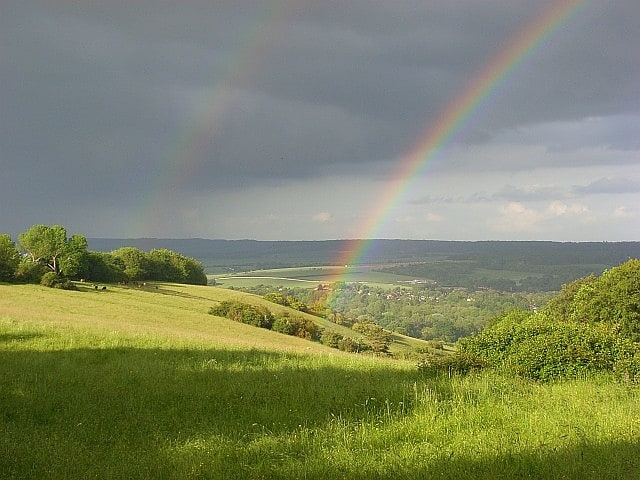
Lardon Chase, the Holies and Lough Down are three adjacent National Trust countryside properties in the English county of Berkshire. They are situated on the edge of the Berkshire Downs above the village of Streatley and overlooking the Goring Gap. Together they comprise an outstanding area of 27 hectares of downland and woodland with many attractive walks and views. Lardon Chase, and a part of the Holies known as Holies Down, are also designated as Sites of Special Scientific Interest. The properties lie within the North Wessex Downs Area of Outstanding Natural Beauty, and in an area known for the presence of several Neolithic and Iron Age forts.
Lardon Chase and Lough Down comprise a spur of downland which lies to the west of Goring and Streatley. Since it was acquired by the National Trust, the land has been managed by a mixture of scrub clearance and cattle grazing, so as to encourage the growth of chalk-loving plants. The Holies is a woodland fringed grassy coombe which is separated from Lardon Chase and Lough Down by the B4009 road from Streatley to Newbury. Before acquisition by the National Trust, the Holies was used for motorbike scrambling and turf stripping, resulting in considerable damage to the ground. The National Trust is encouraging the natural recolonisation of the area by chalk-loving plant species. There are three turf mazes in the Holies.
The slopes of all three properties form one of the largest remaining areas of chalk grassland in the county and support a wide range of flowers and butterflies. Plants found in the grassland include autumn gentian, clustered bellflower, blue fleabane, vervain, common rock-rose, horseshoe vetch, kidney vetch, marjoram, yellow-wort, purging flax, wild carrot, chalk milkwort, stemless thistle, eyebright, mouse-ear hawkweed, salad burnet, ragwort, wild thyme, hairy violet, squinancywort, hawkweed ox-tongue, common spotted orchid and pyramidal orchid. Scattered bands of hawthorn scrub provide shelter for insect life and several butterfly species can be found, including chalkhill blue, marbled white, adonis blue, grizzled skipper and dingy skipper.
All three properties are interconnected and accessible from a car park located on the B4009, or by steeply climbing footpaths from Streatley village. The Holies is also accessible (on foot only) from the A329 road south of Streatley, whilst Lough Down can be accessed from the ancient track of The Ridgeway on its northern boundary. Access is free, and available at all times. The properties adjoin the Goring & Streatley Golf Club.[1]
Goring and Streatley Bridge
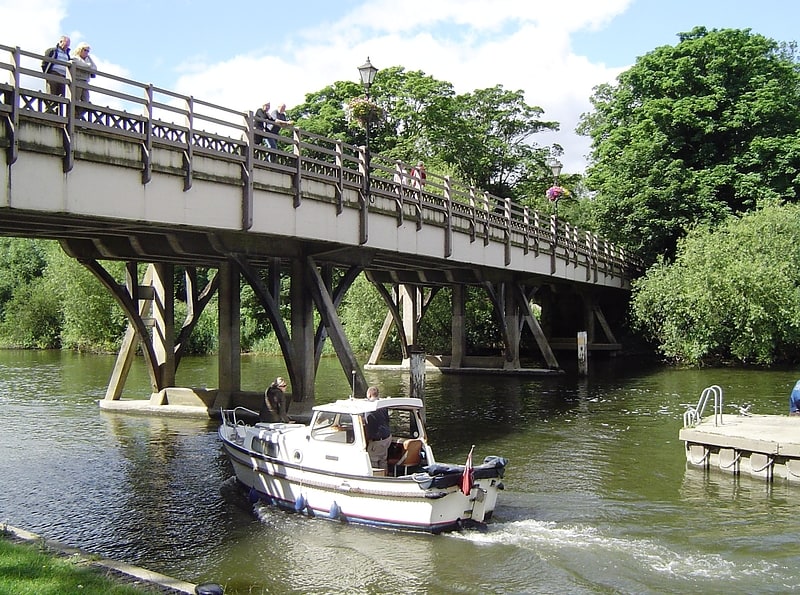
Bridge in England. Goring and Streatley Bridge is a road bridge across the River Thames in England. The bridge links the twin villages of Goring-on-Thames, Oxfordshire, and Streatley, Berkshire, and is adjacent to Goring Lock.
The present bridge was built in 1923, and is in two parts: The western bridge is from Streatley to an island in the river (overlooking The Swan hotel, once owned by Danny La Rue); The eastern bridge is from the island to Goring and overlooks Goring Lock. The bridge consists of timber struts supporting a metal roadway.
Both the Thames Path and The Ridgeway cross the Thames on this bridge.
A bridge was first built here in 1837 being a flat timber bridge of beams on posts. Prior to this there was a ferry although occasionally people would ride across, even driving in a one-horse chaise. In 1674 the ferry turned over in the weir pool with the loss of sixty lives. In the 1970s a Citroën Dyane crashed through the railings at the Streatley end of the bridge landing on a concrete weir 16 feet below. The local Citroën dealer used the photo to illustrate the inherent strength of their upmarket 2CV.[2]
Goring Lock
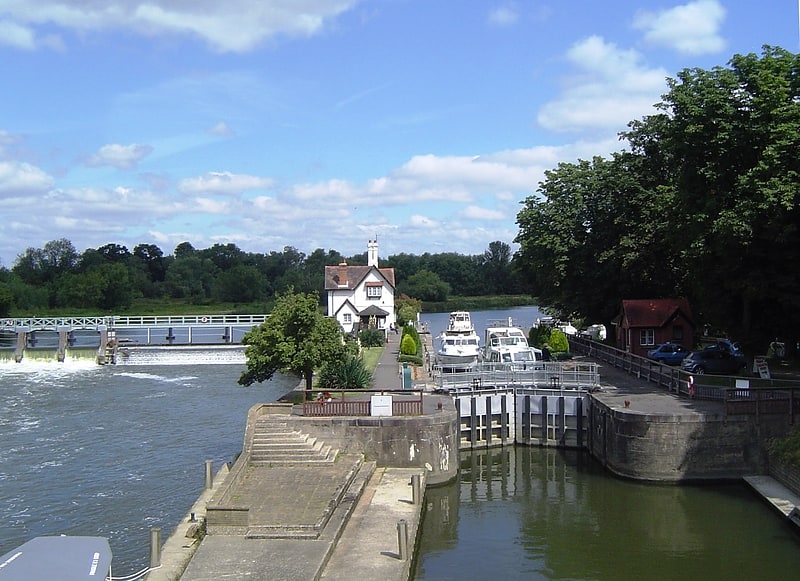
Goring Lock is a lock and weir situated on the River Thames in England at the Goring Gap in the Chiltern Hills. The lock is located on the Oxfordshire bank at Goring-On-Thames, with Streatley, Berkshire on the opposite side of the river. It is just upstream of Goring and Streatley Bridge. The lock was first built in 1787 by the Thames Navigation Commissioners
The weir runs back to an island under the bridge and then another weir goes from there to the Streatley bank.[3]
Streatley Warren
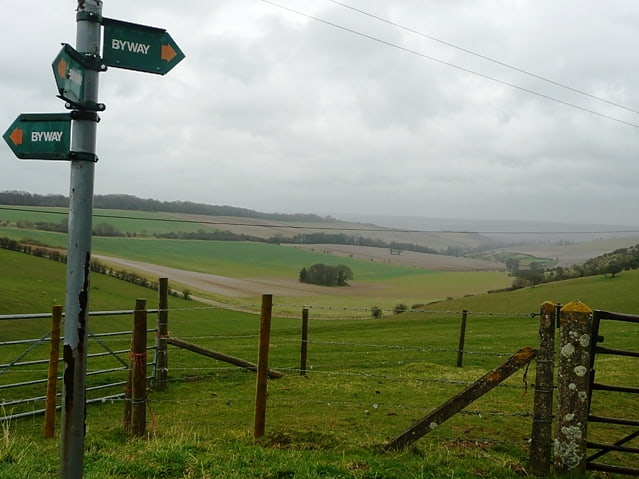
Streatley Warren is a 31.3-hectare biological Site of Special Scientific Interest west of Streatley in Berkshire. It is in the North Wessex Downs, which is an Area of Outstanding Natural Beauty.[4]
Holies Down
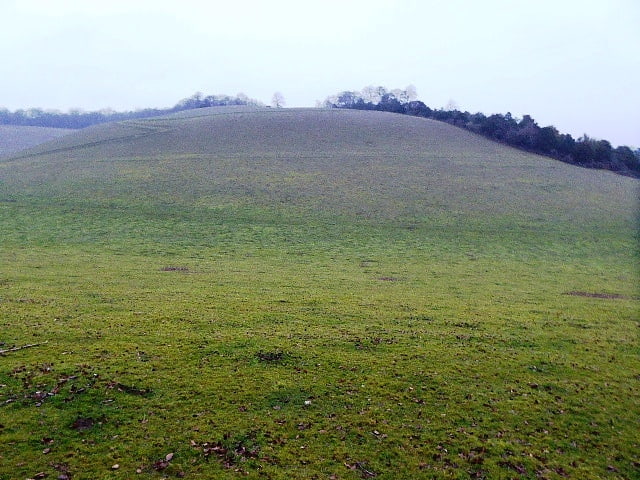
Holies Down is a 5.6-hectare biological Site of Special Scientific Interest south of Streatley in Berkshire. It is in the North Wessex Downs, which is an Area of Outstanding Natural Beauty and it is part of Lardon Chase, the Holies and Lough Down, three adjacent National Trust properties.
This sloping site is an area of unimproved chalk grassland in the Berkshire Downs which is maintained by grazing. The turf is mainly composed of glaucous sedge, red fescue, sheep's fescue, quaking grass, yellow oat-grass, upright brome and tor-grass.
There is access from the A329 road.[5]
Moulsford Downs
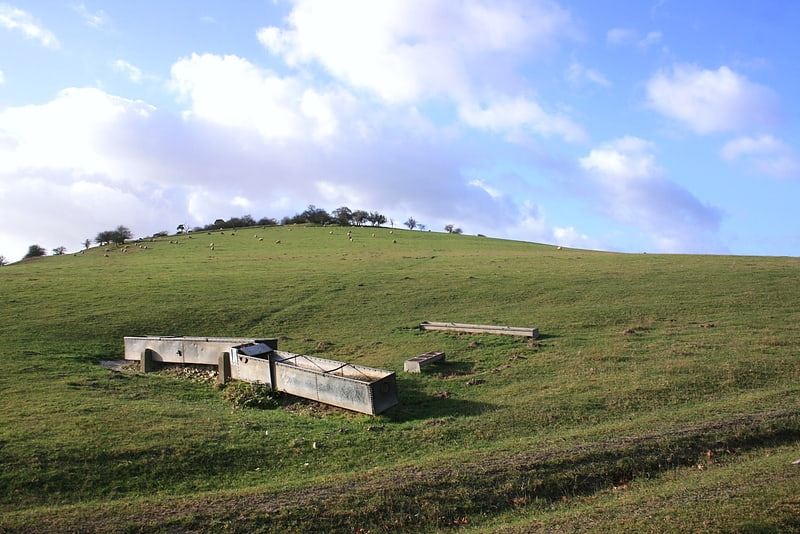
Moulsford Downs is a 13.6-hectare biological Site of Special Scientific Interest north-west of Goring-on-Thames in Oxfordshire.
This chalk grassland site on the Berkshire Downs has a rich wildlife. The diverse invertebrate fauna includes the uncommon robber-fly Leptarthrus brevirostris, the adonis blue butterfly, the juniper shield bug, the weevils Baris picicornis and seed beetle Phyllobius viridicollis, the leaf beetle Phyllotreta nodicornis and the Bruchus cisti.
The site is private land with no public access.[6]